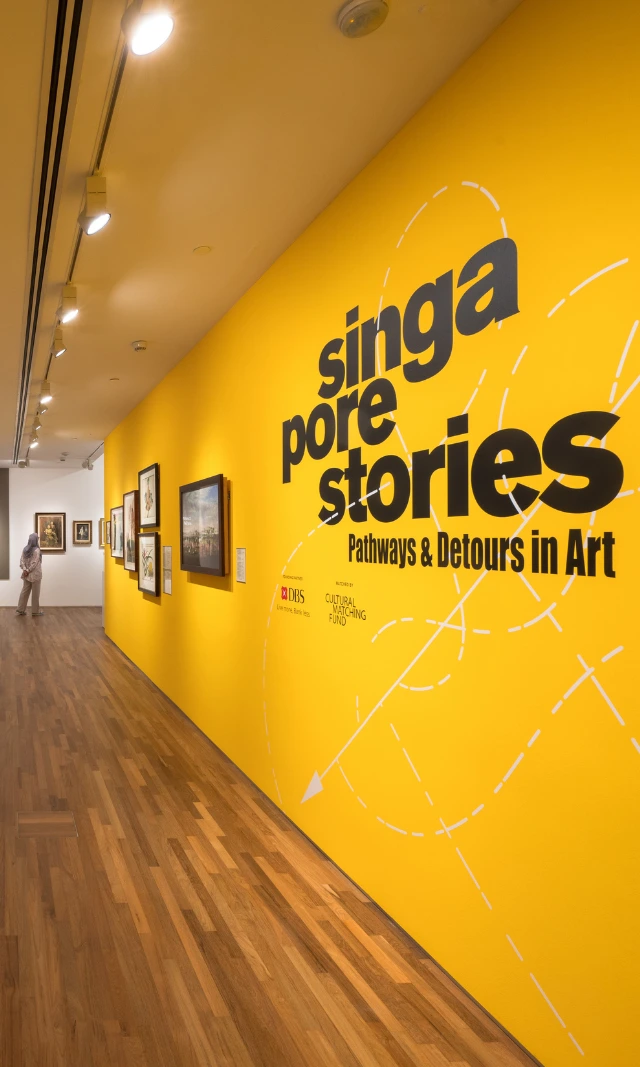Uncover Teo Eng Seng's witty negotiations between the self and society at National Gallery Singapore's latest exhibition, Teo Eng Seng: We're Happy. Are You Happy?
Discover how Cultural Medallion recipient Teo Eng Seng transforms everyday materials into vibrant works of art, embedding humour and irony into his socially engaged practice.
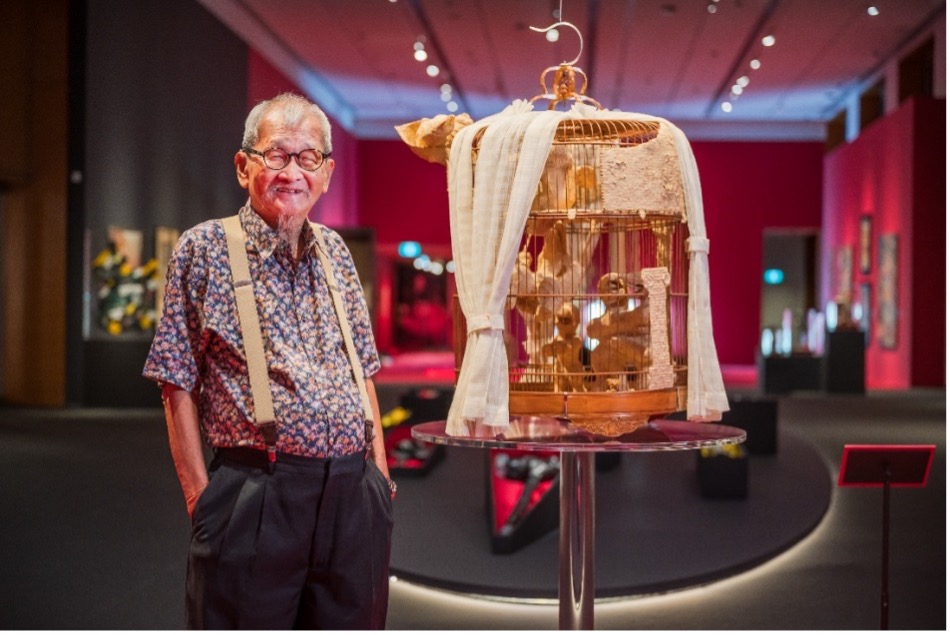
Singapore, 27 August 2024 – Revisit local and global events from the mid-20th century to the present through the ironic and sometimes tragicomic lens of veteran artist Teo Eng Seng at National Gallery Singapore’s latest exhibition. As part of its ongoing SG Artist series, National Gallery Singapore presents Teo Eng Seng: We’re Happy. Are You Happy?, the most extensive and comprehensive survey of this trailblazing multidisciplinary innovator to date.
From 6 September 2024 to 2 February 2025, visitors can look forward to close to 70 artworks from Teo, who is a key figure in developing, advocating, and nurturing Singapore’s arts scene. In recognition of his contributions to the local arts, Teo was conferred the Cultural Medallion–Singapore’s highest arts accolade–in 1986. As an art teacher, Teo encouraged his students to find their creative voices by using contemporary art to respond to social issues. This is reflected in his practice, where he continued to develop and expand his multidisciplinary practice while imparting technical art skills as he explored different art forms and materials, from sculpture and painting to performance and installation art.
Over seven decades, Teo has continuously explored everyday life through his use of common materials and his commitment to social engagement and change. In the 1980s, Teo invented paperdyesculp, a medium that involves shaping dyed papier-mâché and other materials into sculptural artworks. This versatile medium reflects Teo's artistic philosophy and belief in creative spontaneity, repurposing everyday items like paper and found objects into collages and assemblages. His practice is defined by a visceral desire to reflect on the complexities of daily life, all infused with humour and kitsch.
Dr. Eugene Tan, CEO and Director of National Gallery Singapore says, “We are excited to present the works of one of Singapore’s most prolific local artists, Teo Eng Seng, as part of our second instalment of our SG Artist series this year. Teo is a highly respected artist best known for bringing modern art aesthetics to Singapore’s visual arts scene and creating socially conscious artworks that respond to issues that are still relevant today. We hope that visitors who come to Teo Eng Seng: We’re Happy. Are You Happy? will foster a deeper appreciation for local art and uncover how it can be a bridge to understanding the world around us.”
Mr Yuen Kuan Moon, Singtel’s Group Chief Executive Officer says, “Singtel is thrilled to support Teo Eng Seng, a Cultural Medallion recipient and one of Singapore's most esteemed artists. As a homegrown brand, we are proud to champion Singaporean artists like Teo who have demonstrated the unique ability to transform everyday materials into profound artistic statements and has helped to foster a deeper connection between art and society in the process.”
The exhibition features two thematic sections that reflect the guiding philosophies Teo upheld throughout his career: the spirit of innovation and the use of art as both a medium for social engagement and as the message.
Don’t Try to Read it, See it, Feel it: A multidisciplinary practice guided by experimentation and emotive expressions

The exhibition’s first section, Don’t Try to Read it, See it, Feel it, celebrates Teo for his unique approach to art, where he explores various practices, genres, and movements, transforming them through his formal experimentations. His works, often inspired by things he had seen, heard, or felt, do not depict recognisable objects. Instead, Teo adopts vibrant colours and unexpected forms to create haphazard arrangements, creating visual realms that are integrative of existing genres and movements yet irreverent towards their established norms and practices.
His methods in sculpture and painting are distinctive, evoking memories and feelings from his own experiences. Teo emphasises spontaneity, adding colours and materials intuitively rather than through rational planning. The exhibition well represents Teo’s exposure to abstraction and abstract expressionism during his studies as an art student in Singapore, London, and Birmingham.
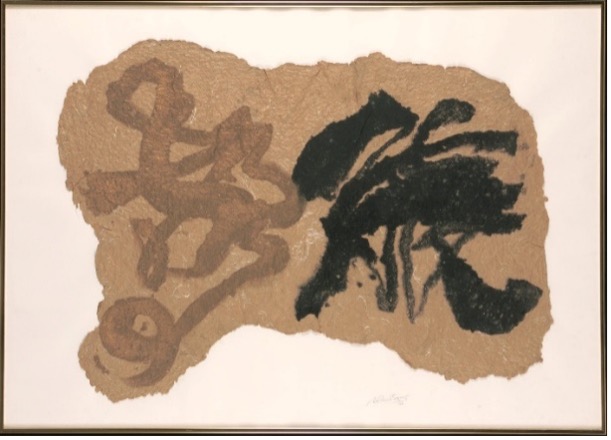
Collection of National Gallery Singapore. P-0949.
Don’t Try to Read it, See it, Feel it (1986) is the artwork that gives its name to the title of this first section. Given Teo’s English-educated background and limited familiarity with Chinese characters, he presents a personal interpretation of Chinese calligraphy. By encouraging viewers to engage with the word's essence through sensation and intuition, Teo’s deliberate subversion challenges traditional notions of legibility in the Chinese logogram system, underscoring the transformative power of visual communication beyond linguistic boundaries.
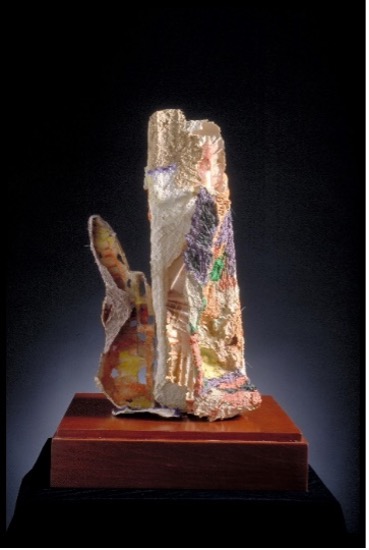
Collection of National Gallery Singapore. 1997-02624.
Magnificence of Nature (1996) is a paperdyesculp sculpture that stands proudly atop a pedestal, exuding a monumental presence. Its gnarled form, uneven surface, and vibrant markings evoke the essence of something organic and alive, capturing the process of growth and decay. The layered surfaces, unified by pigments, reflect the themes of decay and regeneration inherent in our biological world.

Collection of Singapore Art Museum, 1992-00468.
The intersection between Western and Eastern influences continues throughout his artistic practice, including one of his largest artworks, Five Nails (1991). Visitors will be in awe of the large installation, which stands at 3.7 metres, inspired by the Buddha’s palm as depicted in the classic Chinese novel Journey to the West. Representing the inescapable grasp of humanity’s subconscious, the long nail-like monoliths, which resemble giant fingertips, consume visitors and entrap them as they approach the artwork, relaying a sense of the sublime from being caught in something far larger and greater than they are.
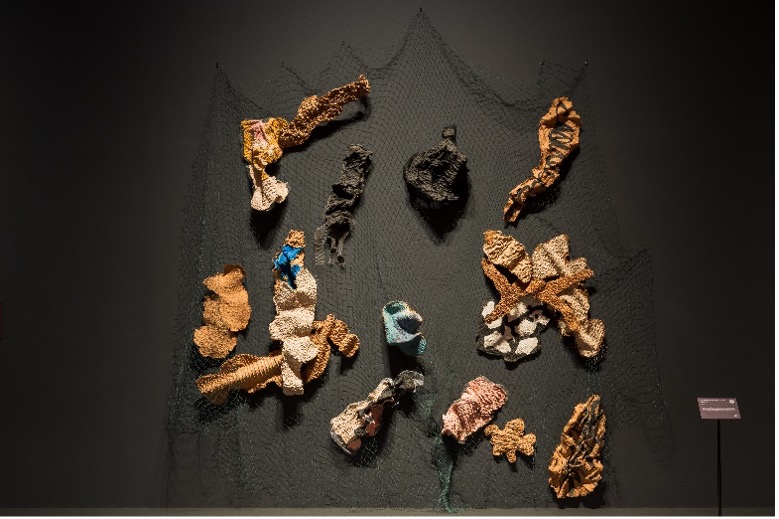
The Net (Most Definitely Singapore River) (1986) is an installation featuring a fishing net entangled with paperdyesculp debris. This work is Teo's wry response to the overuse of the Singapore River as a subject by local artists. Instead of a romanticised depiction, Teo captures the pollution from the 1970s to the 1980s, emphasising rawness and spontaneity in his re-creation of the river's debris.
Sweet Talk, Straight Talk: A Global Citizen Engaging in Social Commentary through Art
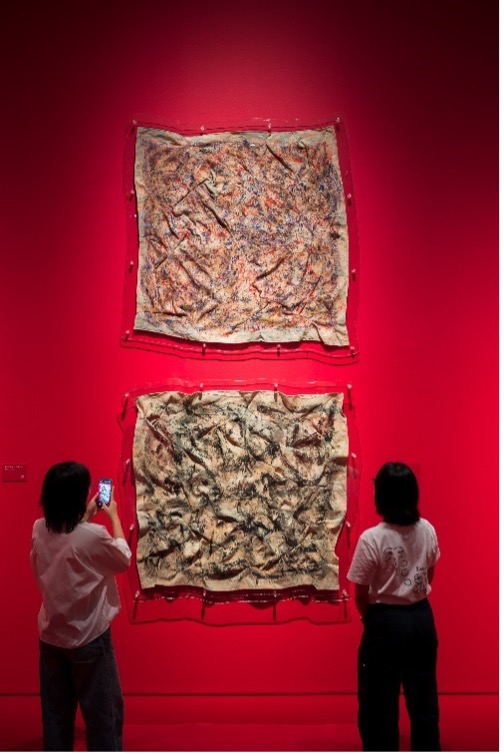
Throughout his career as an arts practitioner and educator, Teo has posited that art should be a platform for social commentary and a means to express their thoughts about the world. Through his art, Teo called for social justice, dignity, and common humanity when confronting sobering realities of social issues in the latter half of the 20th century.
This section showcases Teo’s "straight talk" through bold, unbridled expressions of freedom and perseverance in his paperdyesculp works and sculptures. These are tempered by "sweet talk"—humour, irony, and kitsch—revealing his tongue-in-cheek perspectives on global and local issues, artistic genres, and personal events.
This duality captures Teo’s practice of negotiating society and selfhood with honesty and wit. Through his works, Teo conveys sober, emotive, and sensitive expressions for social justice, dignity, and common humanity, where the social is intimately tied to the self, evoked through painterly and sculptural attributes.
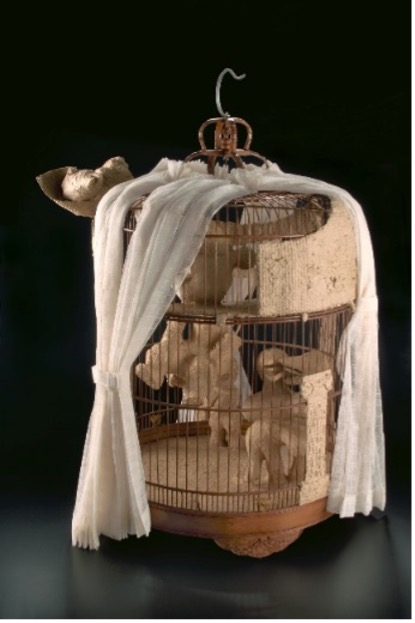
The exhibition's namesake, We’re Happy. Are You Happy? (1997) is a combination of ready-made objects with paperdyesculp techniques, embellishing a second-hand birdcage with paper pieces resembling classical columns, mimicking the opulence of grand mansions in Singapore's wealthy neighbourhoods. Despite the theme of captivity, paper birds within the cage frolic between themselves in the gilded cage, symbolising the contradictions of affluent lifestyles and the trade-off between material comfort and personal freedom.
Teo's work critically reflects on the societal divide between different social classes, encouraging viewers to contemplate the complexities of wealth, privilege, and the pursuit of genuine expression amidst social disparities.
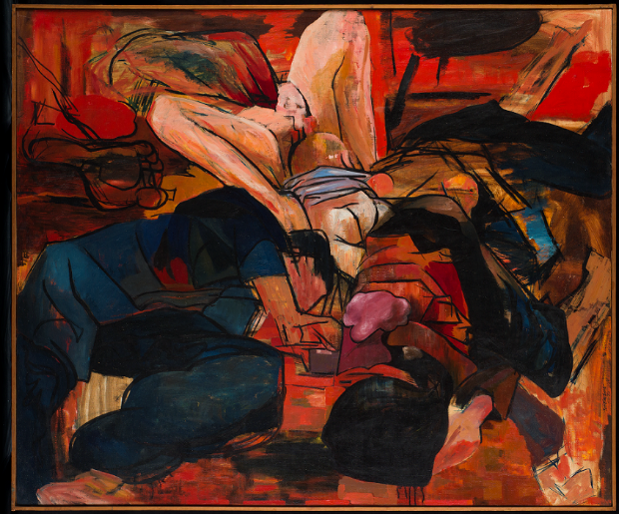
Collection of National Gallery Singapore. 2009-01510.
Visitors can also view Teo’s reflections on global events, including his painting Massacre at My Lai (After Haeberle’s) (1970). This painting references Ronald L. Haeberle’s photograph of the My Lai massacre, depicting a chaotic pile of bodies in harsh black lines against a vivid red background. By cropping the original image, Teo intensifies the brutality of the scene, creating a powerful and direct confrontation with the viewer.
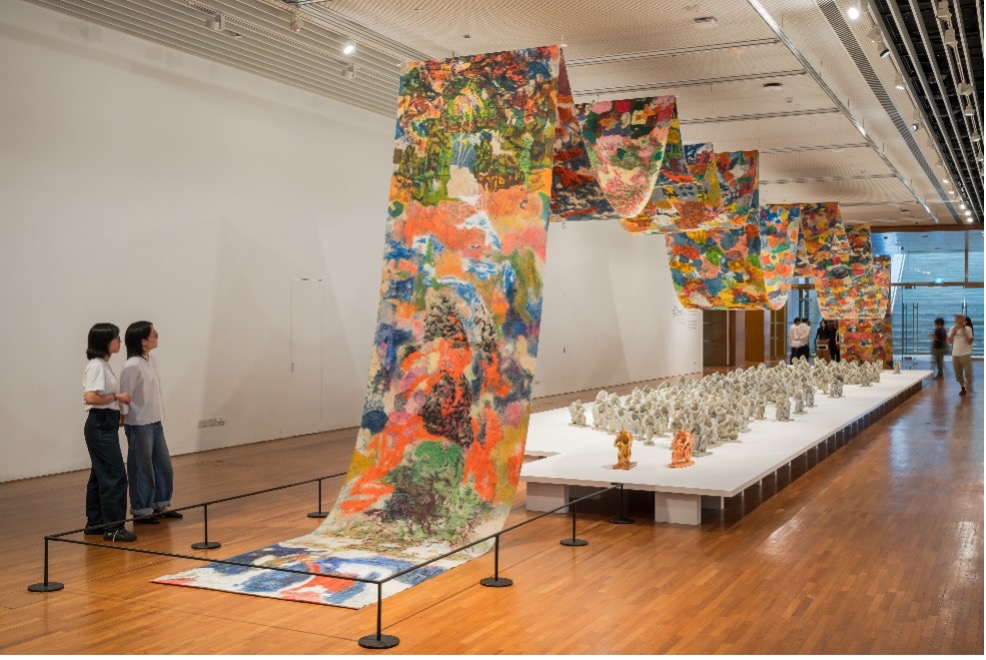
Bottom: Ah Wah and Ah Kiat: Crossing Borders. 2001. Glass reinforced concrete, 202 parts,
each approximately 34 x 50 x 31 cm. Collection of National Gallery Singapore. 2022-00924.
Beyond the gallery spaces, visitors can look forward to a re-creation of the world’s busiest land crossing border at The Spine Hall. Ah Wah and Ah Kiat: Crossing Borders (2001) captures the daily migration of workers between countries worldwide. Closer to home, this work resonates with the Causeway between Singapore and Malaysia as one of the busiest border crossings in the world. More than 200 sculptures of motorcyclists are massed together as a crowd whose monotony is only broken by two golden figurines in their midst, emphasising their individuality. Teo’s work symbolically honours the everyday worker, showcasing their inherent value and dignity through their labour and contributions to society on both sides of the Johor Strait.
Teo Eng Seng: We’re Happy. Are You Happy? runs from 6 September 2024 to 2 February 2025. Visitors may purchase Special Exhibition Passes at $25 each ($15 for Singapore Citizens and Permanent Residents) to view the exhibition at Singtel Special Exhibition Gallery 1, Level 3, National Gallery Singapore.
Visitors can purchase early bird Gallery Passes through our website by 26 September 2024 to enjoy 20% off Special Exhibition or All Access Gallery Passes. This promotion applies to both Teo Eng Seng: We’re Happy. Are You Happy? and Kim Lim: The Space Between. A Retrospective, which runs from 27 September 2024 to 2 February 2025 at Singtel Special Exhibition Gallery 2 and 3.
Artworks displayed at The Spine Hall are free to view for all visitors. For more information, please refer to the attached annexe or visit nationalgallery.sg/TeoEngSeng2024. Media assets are available through this link.








